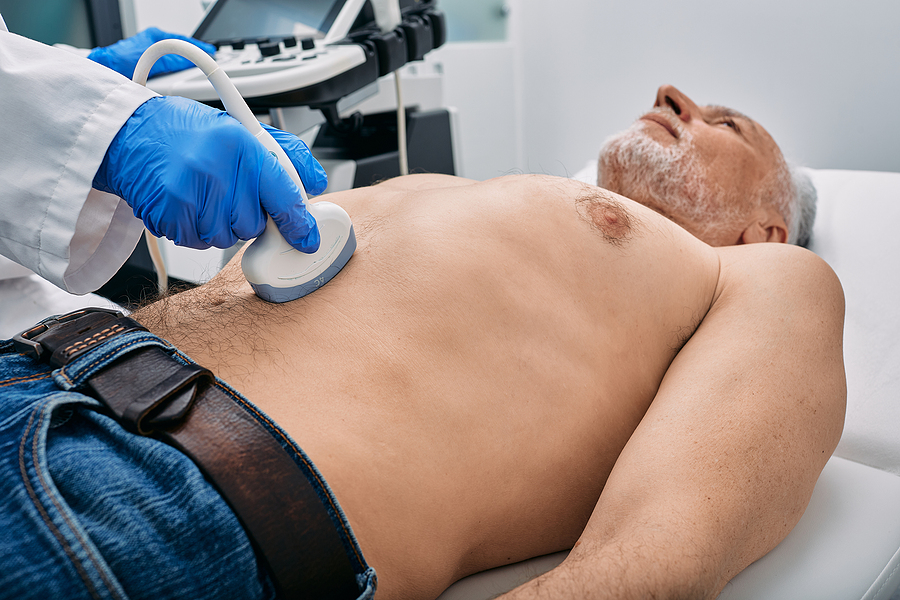HOME > SERVICES > Diagnostic Testing > Abdominal Aorta Ultrasound >
Abdominal Aorta Ultrasound

Abdominal Aorta Ultrasound
An abdominal aortic ultrasound or abdominal aortic duplex is an exam that can help your interventional radiologist evaluate the aorta, which is the main blood vessel that supplies the body’s organs. This allows us to look for any abnormalities such as abdominal aortic aneurysm or aortic dissection.
An ultrasound, sometimes called a sonogram, uses high-frequency sound waves to show the abdominal aorta. Using a special technique known as Doppler, it can also measure the movement of blood within the vessels to determine if blood is flowing appropriately.
The ultrasound allows your interventional radiologist/vascular specialist to look at the size and shape of your aorta as well as the blood flow through it. This makes it an excellent tool for non-invasive detection of abdominal aortic aneurysms and any additional related incidental vascular abnormalities.
An abdominal aortic aneurysm screening is recommended in men and women ages 65-75 years with either a history of smoking or family history of an abdominal aortic aneurysm (AAA). Screening is also recommended in men and women over the age of 75 with a history of smoking, who are otherwise in good health and have not been previously screened.
During the abdominal aorta ultrasound, you will lay on your back on a movable exam table and you may be turned to either side. Warm gel is placed over the area to be tested and an ultrasound probe is used to image different portions of your abdomen and pelvis, in order to evaluate different segments of your aorta and some selected branching blood vessels. These findings can be seen as a black and white ultrasound image.

During the exam, you will hear the ultrasound machine reproduce your pulse as detected through the Doppler component of the exam. You may also see blue or red colors flash on the screen demonstrating the pattern of blood flowing through your blood vessels.
The ability for an abdominal aortic ultrasound to detect an aneurysm in someone who has it, known as sensitivity, approaches 100%. Similarly, specificity or the ability for ultrasound to correctly identify someone as not having an aneurysm is 100%. Although there are some minor limitations to ultrasound, like the size of the body being imaged, or incidental presence of bowel over the aorta, which may result in limited imaging and a potential repeat exam, overall ultrasound is an excellent, reliable tool for screening.
Unfortunately, despite guidelines, it has been shown that ultrasound screening for abdominal aortic aneurysm is typically very underutilized. If you fit the screening criteria described, consider discussing screening with your primary care doctor or alternatively an interventional radiologist. In appropriately selected patients, screening has the potential to reduce risk of death or possibly disability long-term.
